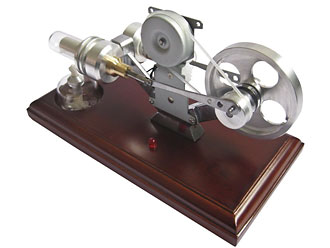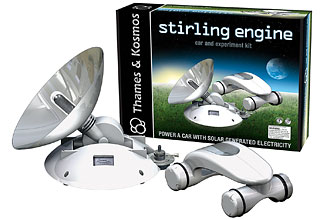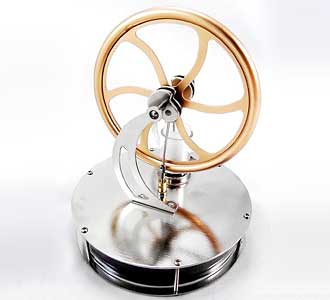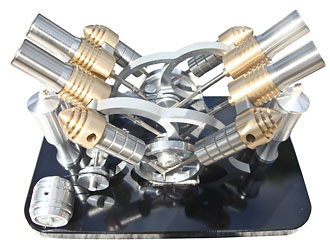3D Printed Stirling Engine Kit
Worlds first Downloadable Stirling Engine Kit
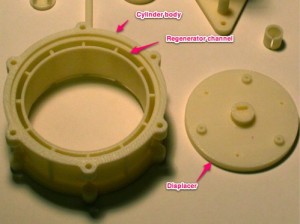
Doug Conner the owner and author of Solarheatengines.com has created the worlds first downloadable LTD Stirling engine kit.
His YouTube video explains most of the project. However, there is much more detailed information in his articles (links and bottom of this article).
3d printed Stirling engine video
"My goal in designing this engine was to use 3D printed parts for simplicity everywhere I could without compromising performance."

This little LTD Stirling engine uses ABS and a print media. Because ABS has a 170° F (77°C) temperature limit this 3D printed Stirling engine kit had to run on relatively low temperatures.
He designed this Stirling engine to allow for regenerator experimentation. It has 12 channels to hold any type of regenerator material you may want to test.
The engine started with 11 printed parts but just recently Doug added a new power piston and displacer.
There are a few non-printed readily available parts necessary to build this unit. Such as O-rings, washers, ball bearings, nuts, machine screws and power piston parts. The top and bottom heat exchangers are Aluminum.
The displacer was originally a composite of 3D printed material and polyurethane foam.
"The unloaded engine will started with a temperature differential of about 45 deg F (25 C) and will run at around 100-120 rpm . The starting actually depends on the absolute temperature ratio which is about 1.084 for T(hot)/T(cold)."
Open source Stirling engine kit
In November of 2012 Doug decide to make this 3D printed Stirling engine kit open source so anyone could build it. In this article he gives the links to the 3D printer files, the assembly drawings and the instructions to put it together.
Doug also gives a BOM (bill of Materials) more assembly instructions in his third post on the 3D printed Stirling here.
New Power piston and dispalcer
In the most recent article about the printed Stirling engine kit Doug offers up a new 3D printed power piston and displacer. These parts performed identically to the original parts. You can get the links and instructions to the new parts here.

